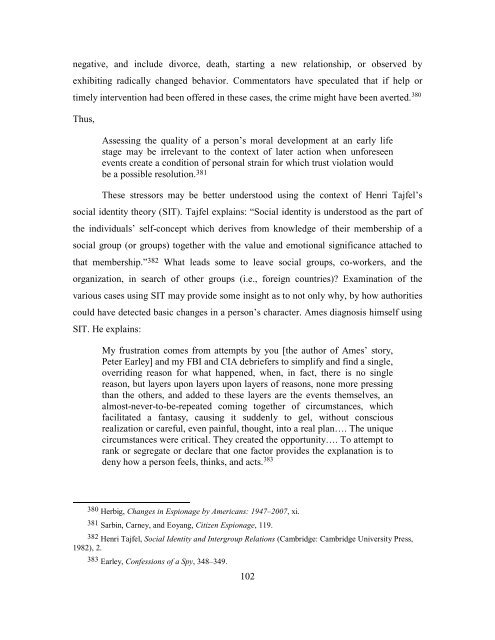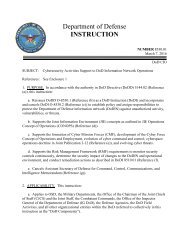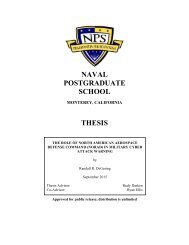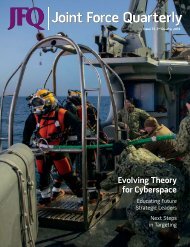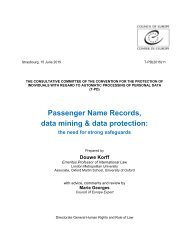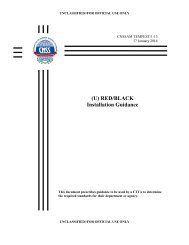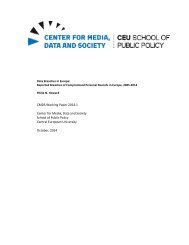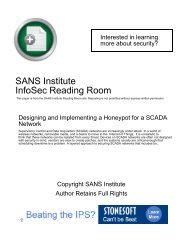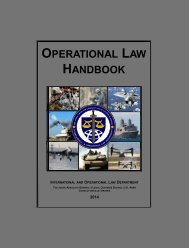SCHOOL THESIS
?view&did=768625
?view&did=768625
Create successful ePaper yourself
Turn your PDF publications into a flip-book with our unique Google optimized e-Paper software.
negative, and include divorce, death, starting a new relationship, or observed by<br />
exhibiting radically changed behavior. Commentators have speculated that if help or<br />
timely intervention had been offered in these cases, the crime might have been averted. 380<br />
Thus,<br />
Assessing the quality of a person’s moral development at an early life<br />
stage may be irrelevant to the context of later action when unforeseen<br />
events create a condition of personal strain for which trust violation would<br />
be a possible resolution. 381<br />
These stressors may be better understood using the context of Henri Tajfel’s<br />
social identity theory (SIT). Tajfel explains: “Social identity is understood as the part of<br />
the individuals’ self-concept which derives from knowledge of their membership of a<br />
social group (or groups) together with the value and emotional significance attached to<br />
that membership.” 382 What leads some to leave social groups, co-workers, and the<br />
organization, in search of other groups (i.e., foreign countries)? Examination of the<br />
various cases using SIT may provide some insight as to not only why, by how authorities<br />
could have detected basic changes in a person’s character. Ames diagnosis himself using<br />
SIT. He explains:<br />
My frustration comes from attempts by you [the author of Ames’ story,<br />
Peter Earley] and my FBI and CIA debriefers to simplify and find a single,<br />
overriding reason for what happened, when, in fact, there is no single<br />
reason, but layers upon layers upon layers of reasons, none more pressing<br />
than the others, and added to these layers are the events themselves, an<br />
almost-never-to-be-repeated coming together of circumstances, which<br />
facilitated a fantasy, causing it suddenly to gel, without conscious<br />
realization or careful, even painful, thought, into a real plan…. The unique<br />
circumstances were critical. They created the opportunity…. To attempt to<br />
rank or segregate or declare that one factor provides the explanation is to<br />
deny how a person feels, thinks, and acts. 383<br />
380 Herbig, Changes in Espionage by Americans: 1947–2007, xi.<br />
381 Sarbin, Carney, and Eoyang, Citizen Espionage, 119.<br />
382 Henri Tajfel, Social Identity and Intergroup Relations (Cambridge: Cambridge University Press,<br />
1982), 2.<br />
383 Earley, Confessions of a Spy, 348–349.<br />
102


